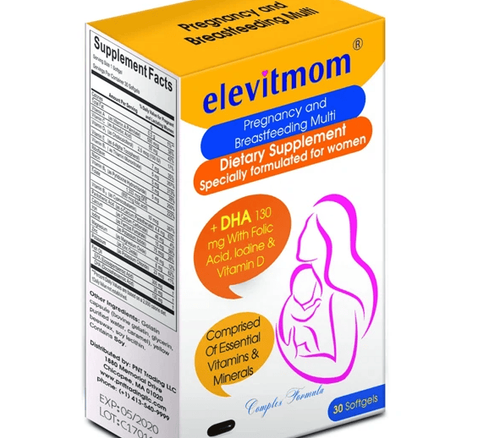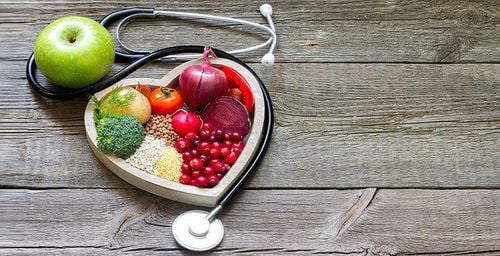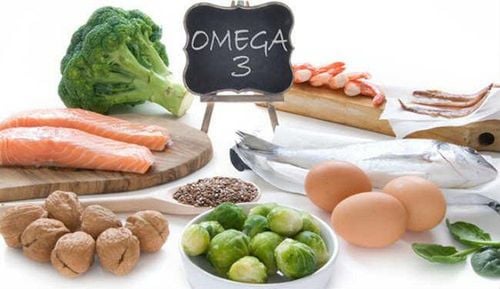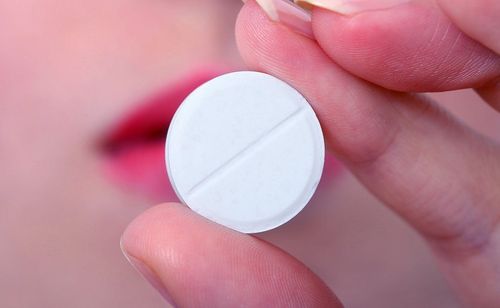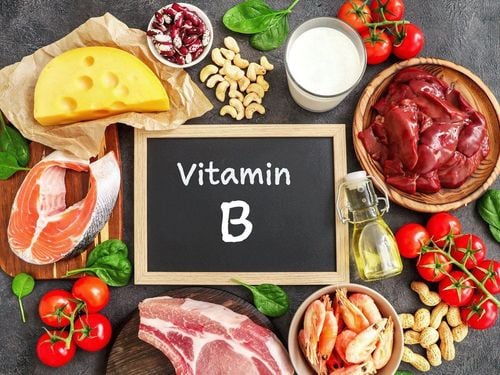This is an automatically translated article.
Smoked salmon is a product made from salmon, they are filleted and then smoked by two methods: hot smoking and cold smoking. This is a relatively expensive dish.
1. Nutritional value of smoked salmon Smoked salmon is relatively low in calories while containing high levels of quality protein, essential fats, and vitamins and minerals. So, is it good to eat smoked salmon? First, it is necessary to find out the nutritional composition of smoked salmon.
A 100g serving of smoked salmon provides: 117 calories, 18 grams protein, 4 grams fat, 600 mg sodium, 200 mg iron, 15% phosphorus (daily value), 26% copper, 59% selenium, 9% riboflavin, 30% niacin, 16% vitamin B6, 136% vitamin B12, 9% vitamin E, 86% vitamin D, 16% choline.
Furthermore, smoked salmon is a rich source of omega-3 fatty acids. A 100-gram serving of salmon provides 0.5 grams of eicosapentaenoic acid (EPA) and docosahexaenoic acid (DHA). These fats are considered essential because the body cannot make them. Therefore, these fatty acids need to be provided from the external diet. In addition, two types of eicosapentaenoic acid (EPA) and docosahexaenoic acid (DHA) are important for brain function, heart health and aging of the body.
2. Salt content in smoked salmon Due to the cooking method of smoked salmon, it is high in sodium. In 100 grams of smoked salmon contains 600 to 1,200 mg of salt. However, compared to a serving of fresh salmon (100 grams), which provides about 75 mg of sodium.
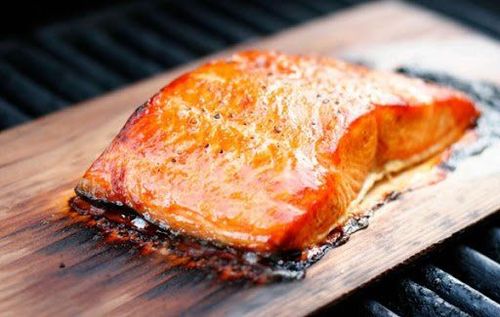
Bên trong cá hồi hun khói chứa hàm lượng natri cao
The Institute of Medicine and the United States Department of Agriculture (USDA) recommend limiting sodium intake to 2,300 mg per day to reduce the risk of heart-related diseases and stroke.
The World Health Organization (WHO) and the American Heart Association (AHA) recommend an even lower sodium intake than the Institute of Medicine and the United States Department of Agriculture (USDA) at about 1,500 mg per day. .
Therefore, when consuming smoked salmon, it is necessary to monitor and control to avoid excessive consumption of sodium content, especially for people who are sensitive to salt.
3. Smoked Salmon Processing Process Smoked salmon is a processing method to add flavor to food processing or preserving by using smoke. It is commonly used with meat, poultry and fish.
3.1 Smoking Process To smoke salmon, thaw the salmon fillets, remove the bones, and coat the fish with salt, sometimes with sugar. Marinating lasts about 12 to 24 hours to drain all the moisture in the fish. This is the process of drying the salmon. The longer the salmon drying process, the more salt is contained in the salmon. However, by absorbing all the moisture in the fish, salt enhances the flavor of the fish, while at the same time it acts as a preservative that prevents the growth of harmful bacteria that can damage fish or cause food poisoning for consumers.
Next, salmon fillets are rinsed with water to remove excess salt before being smoked to dry. The drying process gives salmon fillets a thin outer film, which is the protein layer that allows the smoke to better adhere to the surface of the fish.
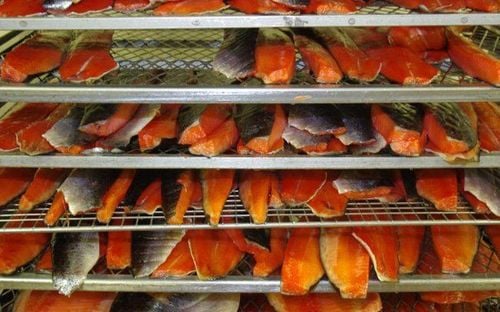
Quá trình hun khói cá hồi
3.2. Cold Smoked Salmon and Hot Smoked Salmon Salmon can be smoked hot or cold. The main difference between these two methods is the temperature of the smoke.
For cold smoked salmon, the temperature should be 10 to 32 degrees Celsius for a period of 20 to 24 hours. This temperature range is not hot enough to cook salmon so extra care is needed during preparation and smoking to reduce the risk of foodborne illnesses.
In contrast, with hot smoking, the smoking chamber must be at a temperature of at least 63 degrees Celsius. The smoking time lasts at least 30 minutes. Most smoked salmon on the market is cold smoked salmon. They will be distinguished from hot smoked salmon based on their packaging.
Cold smoked salmon tends to be smoother and lighter, while hot smoked salmon is more fragile and flavorful.
Food scientists often recommend against home smoking methods. Because, they may not guarantee the risks related to food safety. However, hot smoking can be done safely at home with the right equipment and technique.
3.3. Selecting and Storing Smoked Salmon While some types of smoked salmon require refrigeration, others require more than just refrigeration once the package is opened. Therefore, choosing smoked salmon should carefully check the product label to know the manufacturer's handling and storage recommendations.
Once opened, smoked salmon can be refrigerated for up to 2 weeks or frozen for up to 3 months.
When choosing smoked salmon products, you should avoid buying dark colored smoked salmon. These types of salmon often have an unpleasant taste that should have been eliminated during packaging. However, it is possible that they are left in the final product to increase the weight and cost of the product.
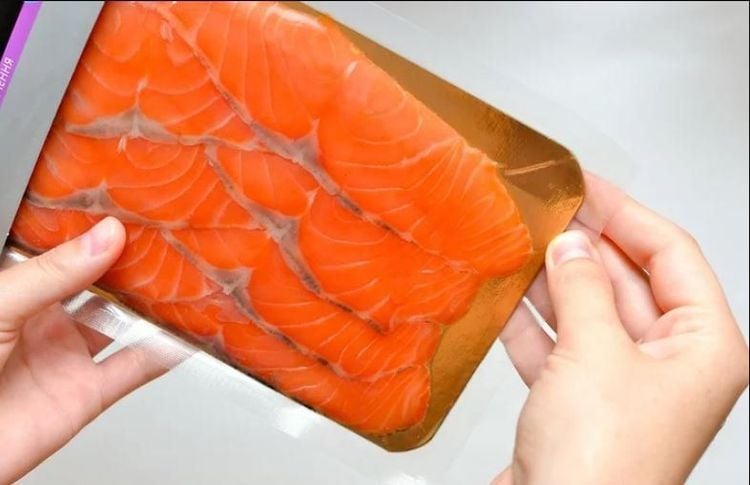
Cá hồi hun khói có thể bảo quản lạnh với thời gian lưu trữ từ 2 tuần đến 3 tháng
4. Health benefits and risks of using smoked salmon What are the benefits of smoked salmon? Smoked salmon offers many health benefits, but they also have a few disadvantages when used.
4.1. Health Benefits of Smoked Salmon Omega-3 fatty acids such as eicosapentaenoic acid (EPA) and docosahexaenoic acid (DHA) provided by fatty fish including salmon are associated with a reduced risk of certain diseases. cardiovascular disease, some cancers, and age-related mental decline.
These fats work by lowering triglycerides, reducing inflammation, and maintaining brain structure and function. The Institute of Medicine and the United States Department of Agriculture (USDA) recommend that adults eat at least 227 grams of seafood per week for about 250 mg of a combination of EPA and DHA.
Smoked salmon also contains a number of vitamins and minerals important for health. A diet of 100 grams of salmon contains 136% vitamin B12 of the daily requirement or 86% vitamin D. Moreover, along with this amount of fish consumed, the body is also provided with selenium which acts as a nutrient. Antioxidants and may protect the body against a number of diseases.
4.2. Some Risks of Eating Smoked Salmon A roughly 100-gram serving of smoked salmon contains more than 1⁄2 of the daily sodium limit recommended by the Institute of Medicine and the United States Department of Agriculture (USDA). Therefore, if monitoring your salt consumption can increase and to limit this salt intake, in addition to using smoked salmon, you can switch to fresh salmon instead.
Furthermore, observational studies also show that smoked and processed meats increase the risk of certain cancers, especially colorectal cancer.
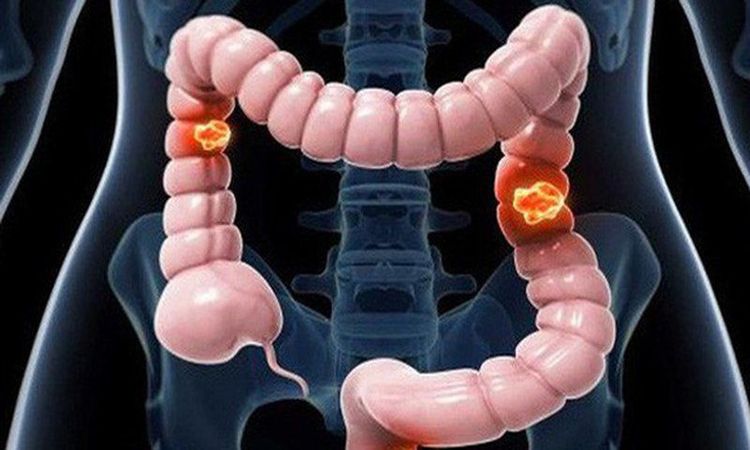
Thường xuyên ăn cá hồi hun khói làm tăng nguy cơ mắc bệnh lý ung thư đại trực tràng
Smoked salmon can also increase the risk of Listeria infection - a food-borne illness caused by the bacteria Listeria monocytogenes. This bacteria that is easily destroyed by heat does not grow at temperatures between 1 and 45 degrees Celsius, which is the temperature range to which cold smoked salmon is applied.
Listeria infection is more likely to infect the elderly, people with weakened immune systems, pregnant women, and infants. Therefore, these populations should avoid cold smoked salmon - even though they are canned and are relatively safe.
5. How to eat smoked salmon Some ways to enjoy smoked salmon:
Serve with bagels and cream cheese Eat with salad Serve with egg toast Toast with breadcrumbs Mix Add to pasta dishes, leek soup Plus, you can make hot smoked salmon at home if you have a smoker. Initially you will fillet the fish and marinate in salt for at least 4 hours. Next, you will pat them dry and place them in the smoker at 107 degrees Celsius until they reach an internal temperature of 63 degrees Celsius. Keep an eye on the temperature of the kiln. And finally, you'll have home-cooked hot smoked salmon. Smoked salmon is a savory fish, with a distinctive flavor and fatty texture. It's packed with high-quality protein, essential omega-3 fats, and vitamins and minerals. However, it does contain significant sodium content. In addition, cold-smoked salmon can increase the risk of Listeria infection. However, smoked salmon is still a healthy addition to the diet in moderation.
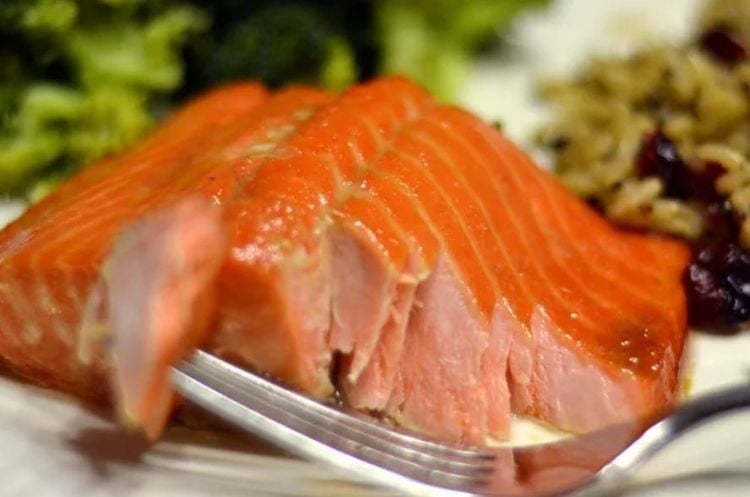
Cá hồi hun khói cần được chế biến và sử dụng một cách hợp lý
Vinmec International General Hospital with a system of modern facilities, medical equipment and a team of experts and doctors with many years of experience in medical examination and treatment, patients can rest assured to visit. examination and treatment at the Hospital.
To register for examination and treatment at Vinmec International General Hospital, you can contact Vinmec Health System nationwide, or register online HERE.
Reference source: healthline.com
SEE MORE
4 important nutrient groups: Carbohydrates, fats, proteins, vitamins and minerals Fish oil supplements: Uses, dosage, side effects Nutritional value from salmon




